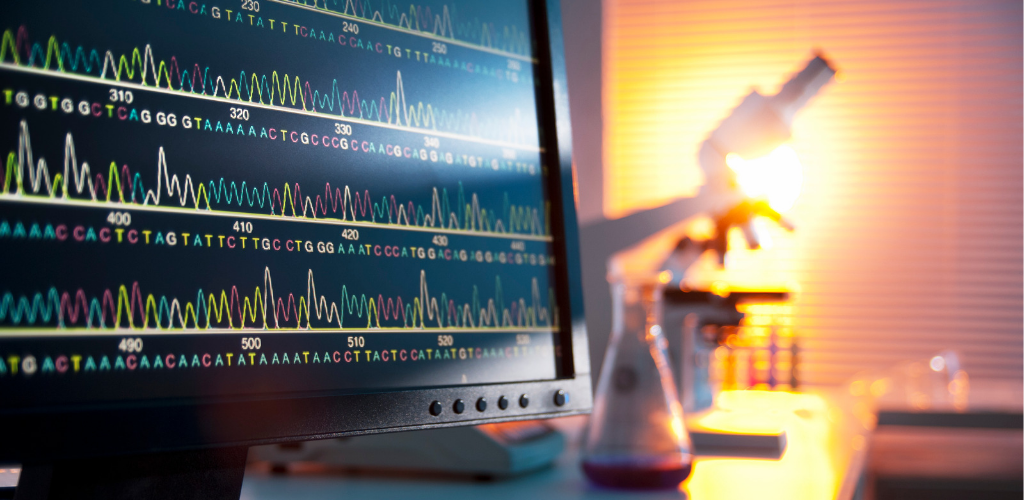Unlocking the Genetic Code of Athletic Potential
Athleticism is not purely a result of hard work and training—it is, in part, written into our DNA. While dedication and discipline remain essential, the role of athletic genetics has become increasingly recognized in sports science. Advances in genomics have revealed how specific genetic variants influence traits such as strength, speed, endurance, and recovery. With this knowledge, athletes and coaches are now turning to sports DNA tests to understand and unlock athletic potential in ways never before possible (3, 4).
From power lifters to marathon runners, the interplay between performance genes and training regimes is being used to guide personalized strategies. It’s no longer about guessing what works—it’s about letting the genome speak.
Performance Genes and the Biology Behind Fitness
Research into genetic factors in fitness has identified hundreds of single nucleotide polymorphisms (SNPs) associated with elite performance. Genes such as ACTN3, PPARA, and AMPD1 play roles in muscle composition, oxygen transport, and metabolic efficiency. These markers help differentiate whether an individual is genetically inclined toward power-based or endurance-based performance (3).
For example, ACTN3 is famously linked to sprinting ability due to its influence on fast-twitch muscle fibers. Conversely, variations in PPARGC1A may support endurance adaptations by enhancing mitochondrial function. But these endurance and genetics correlations are not deterministic. They simply provide a roadmap to guide smarter decisions about training focus, recovery strategies, and competition style.
Personalized Sports Nutrition: A Genomic Approach
Nutrigenomics, the intersection of nutrition and genomics, is reshaping the dietary planning of athletes. By understanding how genetic variations affect nutrient absorption, energy metabolism, and inflammatory responses, personalized sports nutrition becomes a reality (1).
Athletes with specific metabolic profiles may require higher intake of certain vitamins or altered macronutrient ratios to maximize energy efficiency. A tailored plan based on muscle type DNA and metabolic genes doesn’t just optimize performance; it also enhances recovery and prevents overtraining. Rather than prescribing the same diet for all athletes, science now supports precision nutrition rooted in individual biology.
DNA-Based Training Plans: Smarter Workouts Through Science
The value of DNA-based training plans lies in their capacity to individualize exercise programming. Instead of following one-size-fits-all routines, athletes can now align their training with genetic predispositions. Genes that influence VO₂ max, lactate threshold, and muscle hypertrophy can guide intensity, frequency, and recovery intervals (2, 5).
This insight is especially useful in preventing injuries. Knowing an athlete’s predisposition to tendon or ligament issues allows coaches to tailor conditioning and avoid overload. In the long term, such preventive strategies protect careers and improve long-term health. Genomic data, when interpreted properly, empowers athletes to train smarter, not just harder.
Genomic Projects and the Rise of Sportomics
Large-scale efforts like the GENATHLETE and ELITE projects aim to map out the complex relationship between genetics and performance at a population level. These studies use thousands of athletes across sports disciplines to identify reliable genetic signatures of elite status (4).
Beyond genomics, the field has expanded into “sportomics”—an integrated approach that combines genomics with proteomics, metabolomics, and epigenomics. This systems-level view helps track real-time physiological changes in response to training, nutrition, and recovery. It’s a comprehensive strategy to assess an athlete’s functional state and fine-tune all aspects of performance (5).
The Limits and Ethics of Genetic Testing in Sports
Despite its promise, sports DNA testing is not a crystal ball. No gene or combination of genes can predict success with absolute certainty. Environmental factors, psychological traits, training history, and motivation remain critical. Athletic genetics provides probabilities, not guarantees (3).
Moreover, ethical issues surround the use of genetic data in sports. Concerns include privacy, misuse of data for talent selection, and potential discrimination. The specter of gene doping—enhancing performance through genetic manipulation—also looms. As the science advances, regulations and ethical guidelines must evolve in tandem to ensure fairness and integrity.
The Future of Athletic Performance: A Genomic Partnership
The integration of genetic factors in fitness with training and nutrition represents a paradigm shift. This is not just about maximizing elite performance—it’s about injury prevention, smarter coaching, and prolonged athletic careers. By decoding the biological blueprint, DNA-based training plans and personalized sports nutrition elevate the science of sport to a new level.
Whether you’re a competitive athlete or a weekend runner, understanding your muscle type DNA and how it interacts with exercise and diet can lead to more effective, individualized approaches. As genomic tools become more accessible and data interpretation becomes more robust, the fusion of genetics and sports will likely become standard in athletic development.
Conclusion: Redefining Human Limits Through Science
Athletic potential is no longer a mystery locked behind years of trial and error. Through the lens of athletic genetics, sports science has entered an era of precision, personalization, and predictive power. From discovering performance genes to designing DNA-based training plans, the field is shaping a future where every athlete—regardless of level—can train according to their biology.
As we continue to explore how endurance and genetics, muscle structure, and nutrition interact, one truth becomes clear: the genome doesn’t limit us; it guides us. The key is learning to listen.
References:
- Vyas, S., & Mandapaka, R. T. (2024b). Sports genomics and the intersection of genetics and training in sports. In Advances in medical diagnosis, treatment, and care (AMDTC) book series (pp. 355–380). https://doi.org/10.4018/979-8-3693-6317-1.ch012
- Ginevičienė, V., Utkus, A., Pranckevičienė, E., Semenova, E. A., Hall, E. C. R., & Ahmetov, I. I. (2022). Perspectives in sports Genomics. Biomedicines, 10(2), 298. https://doi.org/10.3390/biomedicines10020298
- Semenova, E. A., Hall, E. C. R., & Ahmetov, I. I. (2023b). Genes and Athletic Performance: the 2023 Update. Genes, 14(6), 1235. https://doi.org/10.3390/genes14061235
- Bragazzi, N. L., Khoramipour, K., Chaouachi, A., & Chamari, K. (2020). Toward Sportomics: Shifting from sport genomics to sport postgenomics and metabolomics specialties. Promises, challenges, and future perspectives. International Journal of Sports Physiology and Performance, 15(9), 1201–1202. https://doi.org/10.1123/ijspp.2020-0648
- Malsagova, K. A., Butkova, T. V., Kopylov, A. T., Izotov, A. A., Rudnev, V. R., Klyuchnikov, M. S., Stepanov, A. A., & Kaysheva, A. L. (2021). Molecular portrait of an athlete. Diagnostics, 11(6), 1095. https://doi.org/10.3390/diagnostics11061095




